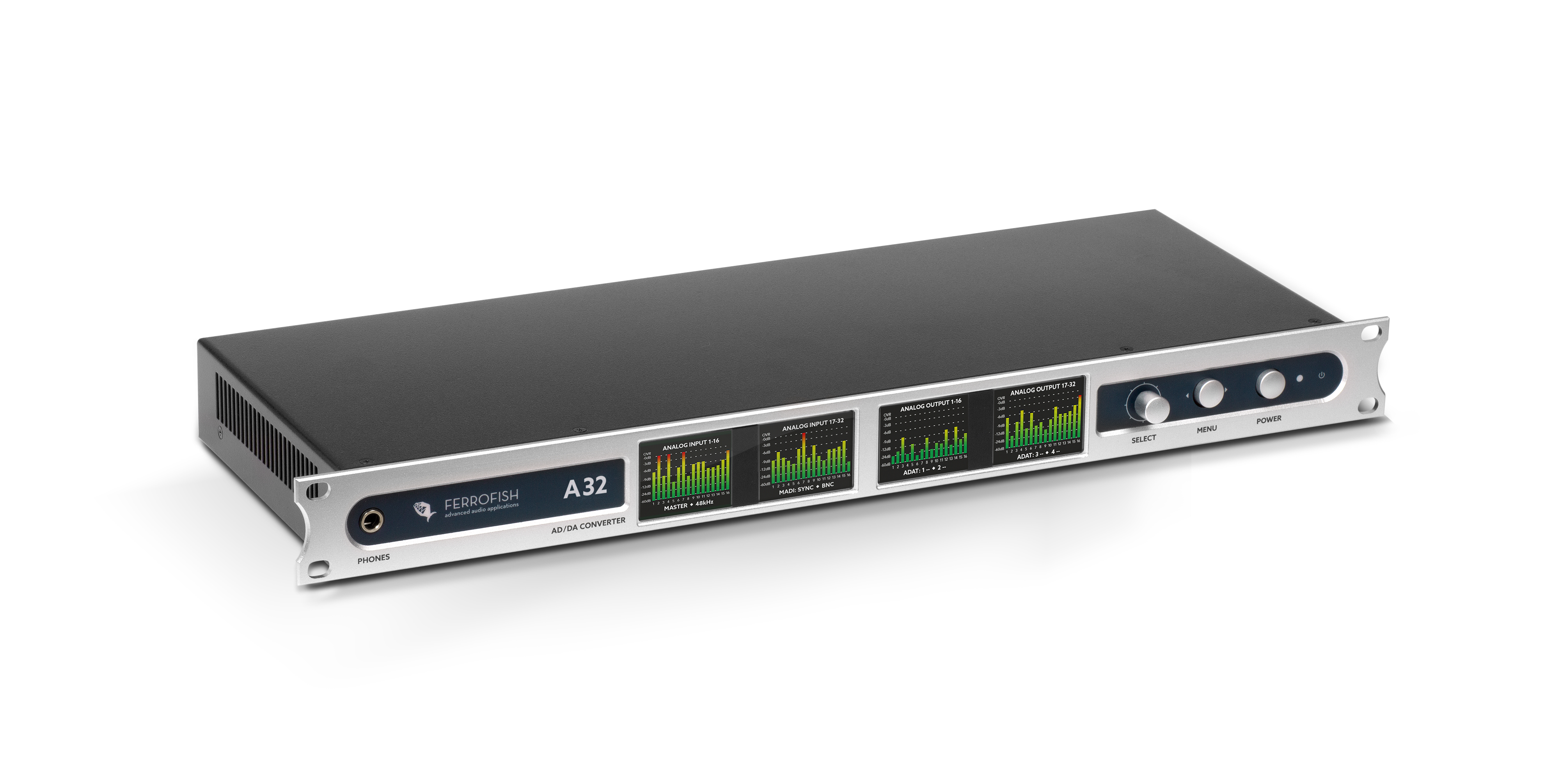Today we’re taking a look at the Ferrofish A32, the highly anticipated new 32 in, 32 out AD/DA converter from the creators of the hugely successful Ferrofish A16 MK-II.
It’s no surprise that the A16 MK-II has become such a popular choice both for live and in the studio. With its excellent converters plus MADI and ADAT capabilities, the A16 MK-II is extremely competitively priced for the kind of features on offer. Playing an important part in the touring rigs of such well-known artists as Olly Murs and One Direction, as well as Lily Allen and Disclosure, the device has also found its way into various studios, including the Record Label studio in London. We were therefore undeniably excited when the company announced it was producing a 64-channel version of its highly rated converter!
New Features
So what can we expect from the Ferrofish A32? Well, along with boasting double the amount of analogue I/O in comparison with the A16 MK-II, the A32 has also been equipped with the latest converters, resulting in better sound quality than ever before. The level of all 64 channels are viewable at any time via the four TFT displays found on the front panel, and with the inclusion of a headphone output, you can now listen to each channel via the unit itself – a very handy addition!
In order to make using the device as easy as possible, Ferrofish have also included an onboard help function. This can be brought up at any time on the unit’s display, so if you’re ever unsure about something on the A32, you can simply load up the help file for an instant source of information without having to consult the manual.
Other new features include the ability to save up to seven mixes, something that live engineers will no doubt find particularly useful. Speaking of live use, the A32 also has two power supply connections for automatic redundancy. Redundancy of the audio streams can also be achieved by connecting both the coaxial and optical MADI connections at the same time. If the device detects an issue with either the audio or the power, it will automatically switch over, allowing you to check for problems without the nightmare of having the sound cut out mid-show.
Like the A16 MK-II, multiple A32s can be connected together in series via MADI to provide an incredible amount of analogue I/O. A MADI stream has a maximum of 64 channels, but there’s no limit to the number of A32s that you can link together – you could use multiple units to send, receive and combine audio data to and from multiple destinations, a function that could be very useful in large venues such as shopping centres or theme parks. Moreover, the A32 does this without any MADI pass-through delay, ensuring all channels from different units arrive perfectly sample aligned. This level of performance not only makes the A32 great for use in a demanding musical setting, but it’s similarly capable in scientific applications as well, where measurements need to be taken with the utmost precision.
Applications
There are a host of potential applications for the Ferrofish A32, in both live and studio contexts, along with broadcast and post-production. If you’re somebody who likes to integrate the classic sound of analogue equipment with the functionality of a DAW, then the A32 could operate as the front-end for an analogue desk, as a way to convert each analogue signal to digital. Combining the A32 with a MADI capable interface such as the RME MADIface USB would make for an extremely powerful and flexible setup, allowing you to capture multiple tracks of audio through your desk and straight to your sequencer, giving you the best of both worlds.
The A32 would also be a great choice for anyone looking for a simple way to increase the amount of analogue inputs and outputs at their disposal. Its extremely high channel count makes it ideal for recording multiple sources at once, while the multiple outputs could be put to use running audio through hardware processors and effects, which could then in turn be routed back into a DAW via the inputs.
This kind of setup provides an ideal solution for anybody with a large collection of electronic instruments. For example, a band with a number of keyboards, synthesizers, guitars or other amplified instruments could use the A32 for both multi-track recording in the studio, or as a way to transfer channels to the FOH desk in live situations. The A32 has 4 sets of ADAT I/O, so even without a MADI interface you still have access to all 64 channels. The A32’s combined MADI and ADAT capabilities mean it could also be used as a routing matrix, giving you the ability to combine devices that use either protocol into one streamlined system.
To summarise, the A32 is a really exciting development from a well-established manufacturer. The Ferrofish A16 MK-II has garnered a lot of attention for its quality, consistency and performance that outshines far more expensive machines. The A32 looks set to improve on its sibling even further, with improved converters, double the analogue I/O and a more comprehensive user experience. In short, Ferrofish have done it again, managing to pack an incredible amount of functionality into 1U of rack space at a price-point that works out even cheaper per channel than the A16 MK-II, offering serious value for money.





















